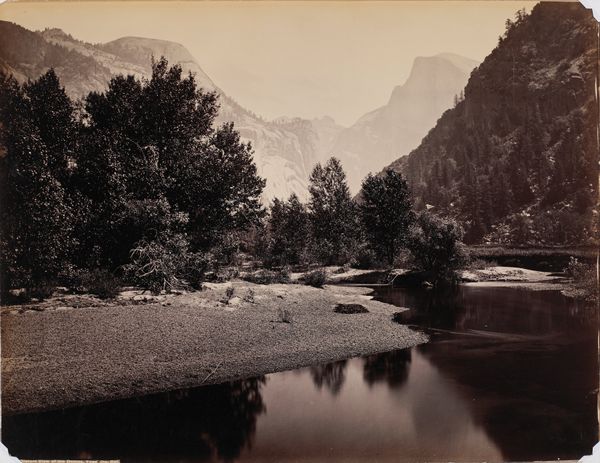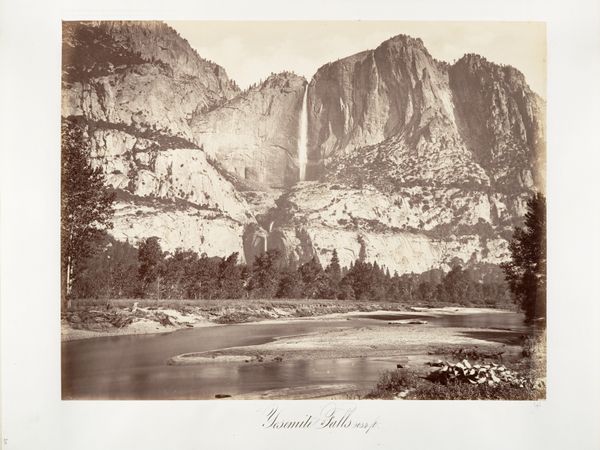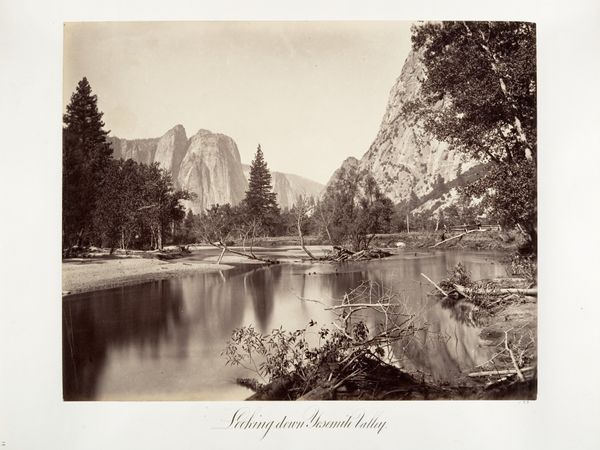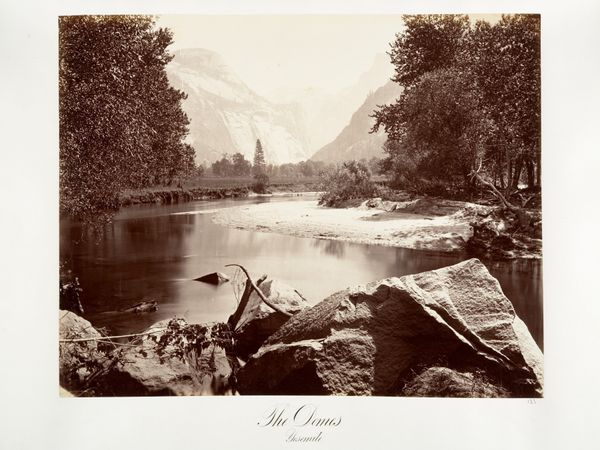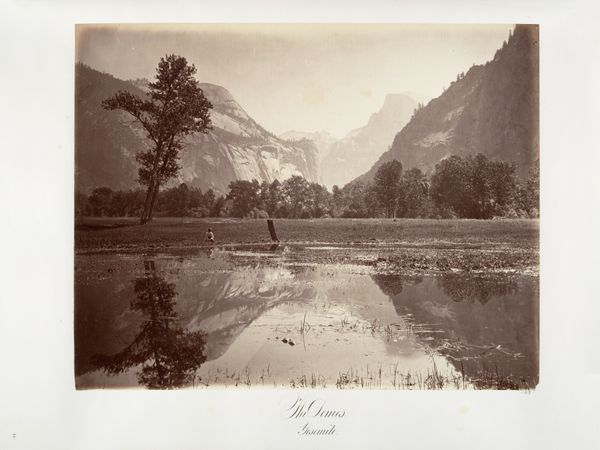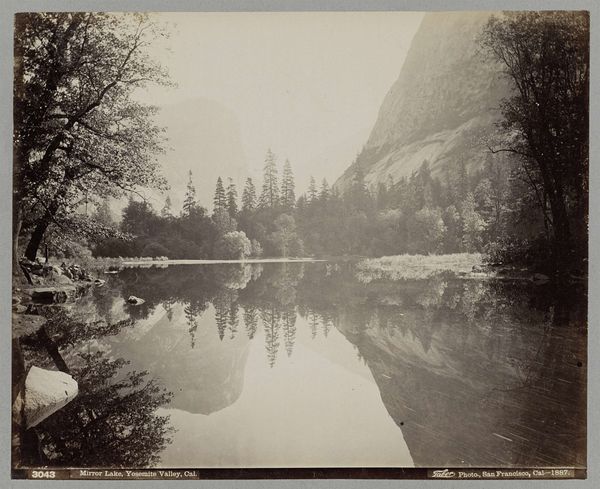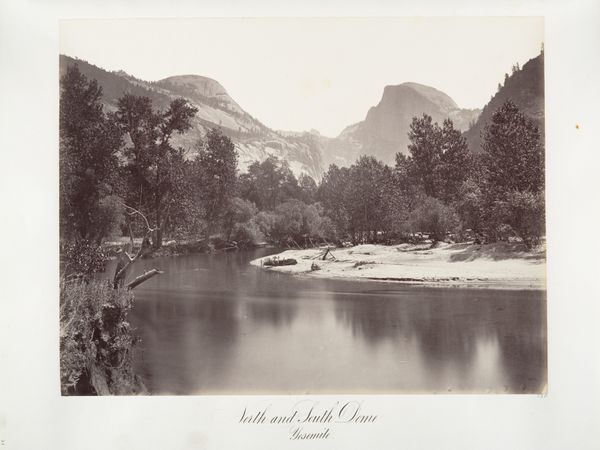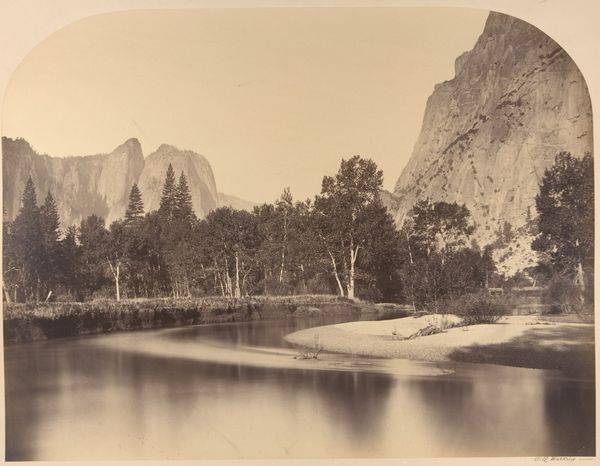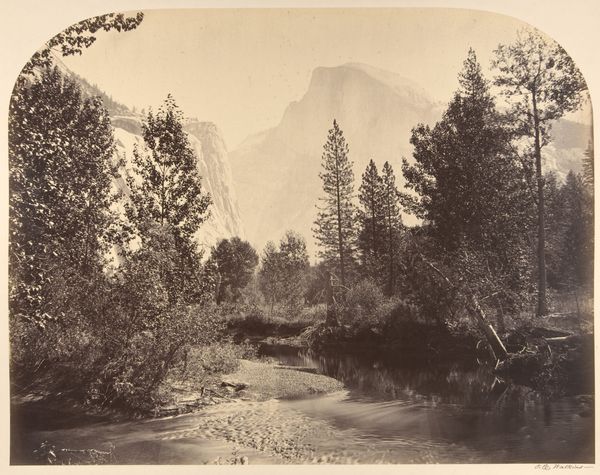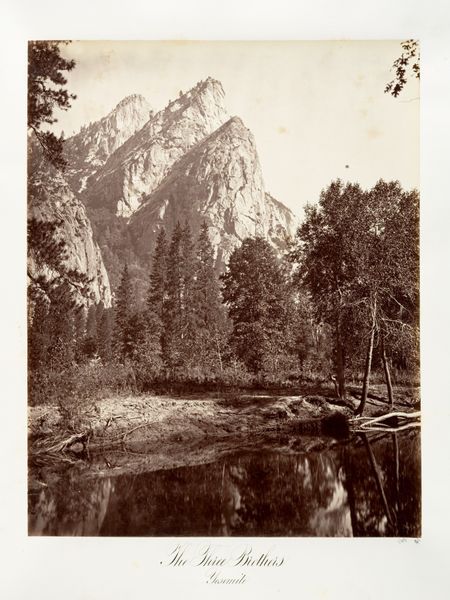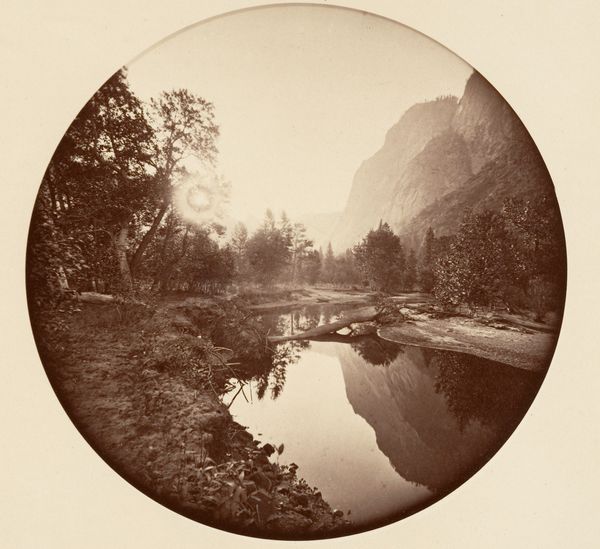
print, photography, albumen-print
#
natural shape and form
# print
#
landscape
#
photography
#
hudson-river-school
#
albumen-print
#
realism
Copyright: Public Domain
Curator: Here we have Carleton Watkins’ “Looking Up Yosemite Valley," likely taken between 1870 and 1874. It's an albumen print, showcasing his skill with the wet plate collodion process. Editor: It’s immediately calming, almost meditative. The way the light plays on the water... it’s like a perfect mirror reflecting the towering rock formations and trees. It gives off a serene and solitary feeling. Curator: Watkins was incredibly meticulous. Consider the sheer physical labor involved: transporting fragile glass plates, chemicals, and a darkroom tent into remote locations. His choice of the mammoth plate format gave unparalleled detail. Editor: And those rock formations themselves become symbolic. Aren’t they, in a way, representations of strength, endurance, even spiritual aspiration? Yosemite held sacred meaning for indigenous peoples long before Watkins arrived, imbuing the place with spiritual power and connecting it to collective memory. Curator: Certainly. The very act of photographing, especially with such cumbersome technology, represented a complex negotiation with the land itself. These photographs encouraged westward expansion and shaped ideas of Manifest Destiny. Editor: That is definitely something to keep in mind! Beyond that context, I also can't help but perceive them as universal symbols of natural beauty, even purity. It is an untouched vista, seemingly untouched by modern man. Curator: Well, the *illusion* of untouched. Watkins, and photographers like him, were instrumental in defining how we visualized the American West and promoting its economic potential. This romanticized view conveniently ignored the ongoing displacement of Native populations. Editor: True, the image is undeniably a loaded artifact of its time. But within that complicated history lies a visual language that has resonated through generations: a reminder of both our connection to nature and our capacity for disruption. Curator: It's a powerful reminder to critically examine how photographic images frame not only our past, but also how we interpret the landscapes that we still value today. Thanks for these amazing points! Editor: Likewise. It makes me appreciate Watkins' vision and question the many layers that exist behind this ostensibly simple, calm river scene.
Comments
No comments
Be the first to comment and join the conversation on the ultimate creative platform.
